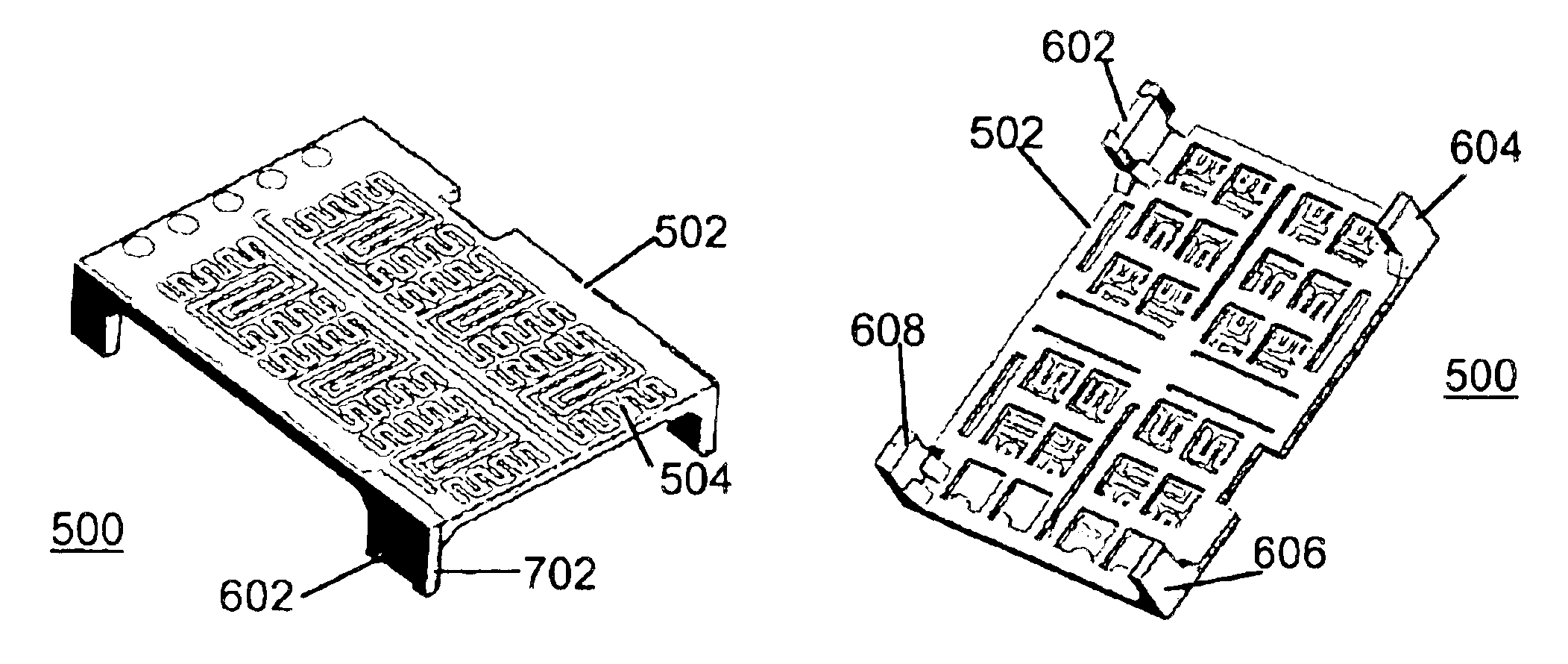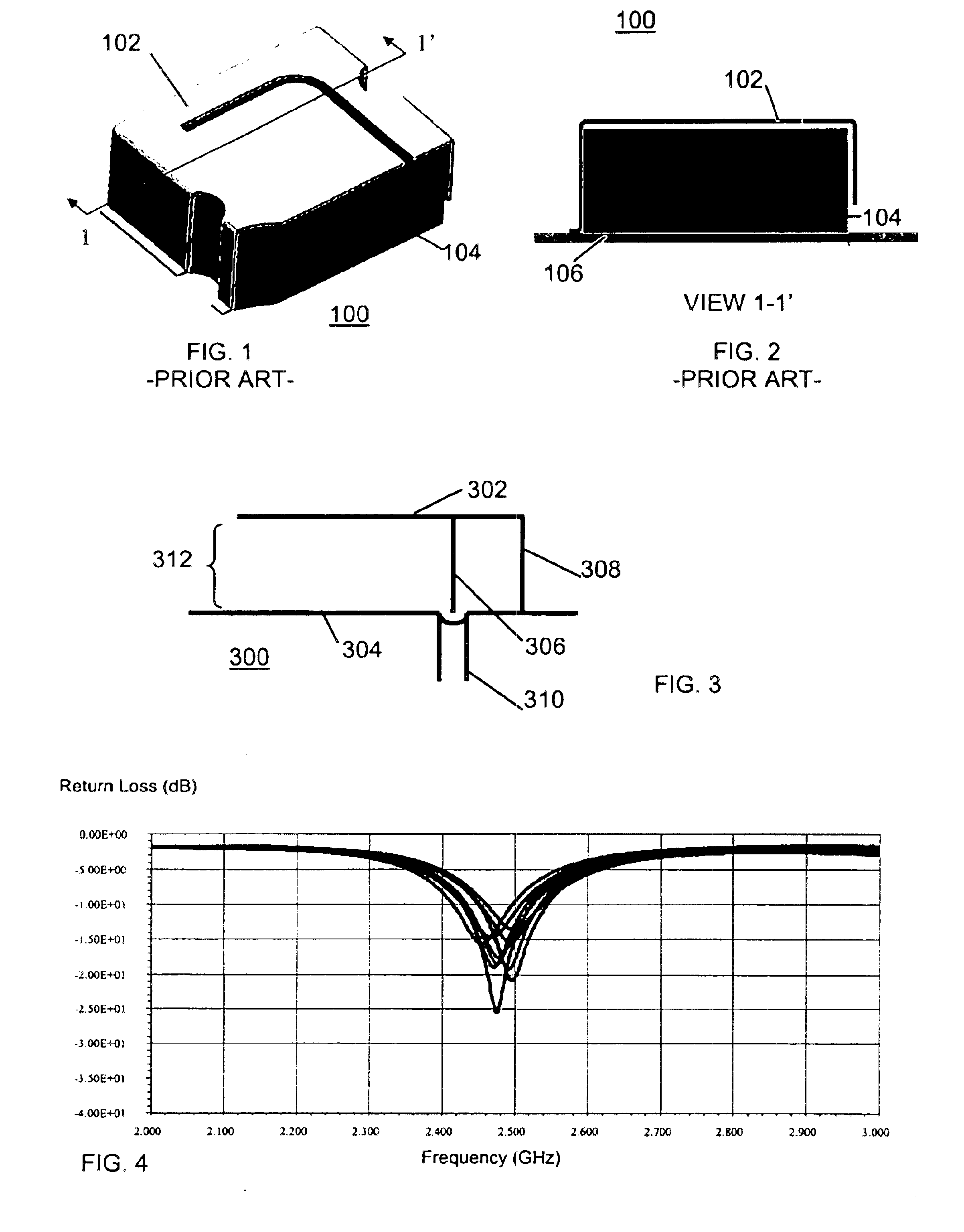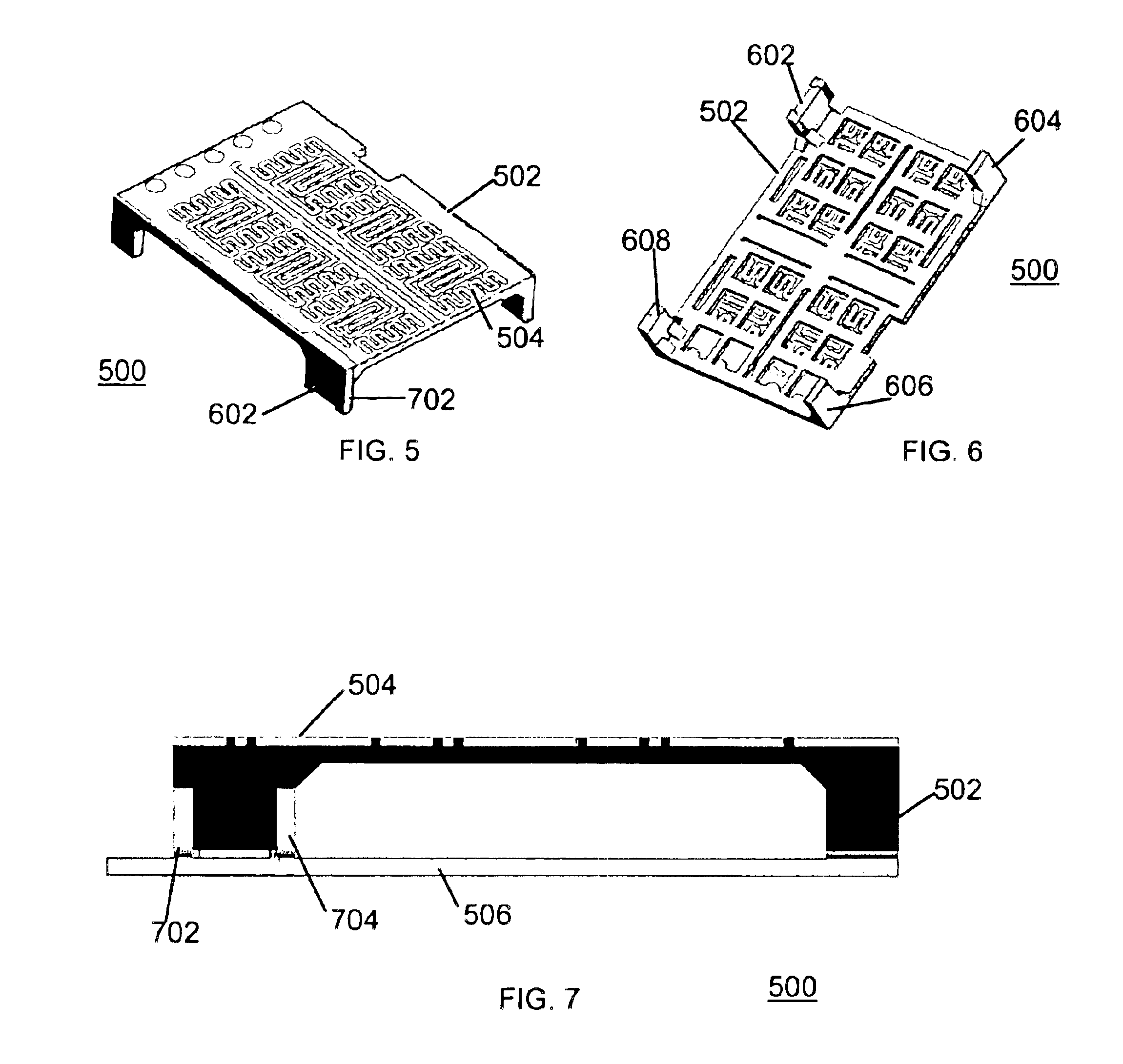Method of manufacturing antennas using micro-insert-molding techniques
a manufacturing method and technology of antennas, applied in the direction of waveguide devices, resonant antennas, other domestic articles, etc., can solve the problems of limiting the industrial design of products, compromising total cost, and height is also the most difficult physical feature to maintain at tight tolerances
- Summary
- Abstract
- Description
- Claims
- Application Information
AI Technical Summary
Benefits of technology
Problems solved by technology
Method used
Image
Examples
Embodiment Construction
The proposed antenna departs from the antenna shown in FIGS. 1 and 2 by using micro-insert molding techniques to manufacture the antenna with much more control on mechanical tolerances and significantly lower total cost. The techniques disclosed here in may be applied to the widest variety of antennas and they have particular application to surface mount antennas to be mounted directly to the surface of a printed circuit board. The main printed circuit board (PCB) of the product forms the ground plane for the antenna. Many types of antennas can be mounted above a ground plane. Bent-wire monopoles, dipoles, patches, shorted patches, and Planar Inverted F Antennas (PIFA) are all examples of antenna types compatible with mounting above a finite size ground plane.
One particular type of antenna which may benefit from the disclosed method and apparatus is a planar inverted F antenna or PIFA. FIG. 3 shows a cross sectional view of a PIFA 300. The PIFA 300 includes an antenna 300, a ground ...
PUM
| Property | Measurement | Unit |
|---|---|---|
| height | aaaaa | aaaaa |
| height | aaaaa | aaaaa |
| distance | aaaaa | aaaaa |
Abstract
Description
Claims
Application Information
 Login to View More
Login to View More - R&D
- Intellectual Property
- Life Sciences
- Materials
- Tech Scout
- Unparalleled Data Quality
- Higher Quality Content
- 60% Fewer Hallucinations
Browse by: Latest US Patents, China's latest patents, Technical Efficacy Thesaurus, Application Domain, Technology Topic, Popular Technical Reports.
© 2025 PatSnap. All rights reserved.Legal|Privacy policy|Modern Slavery Act Transparency Statement|Sitemap|About US| Contact US: help@patsnap.com



